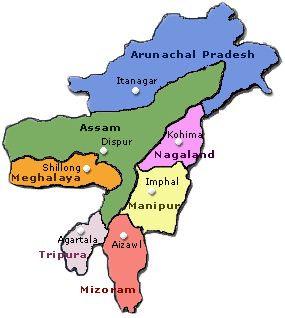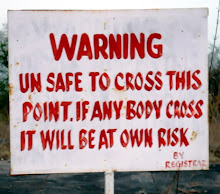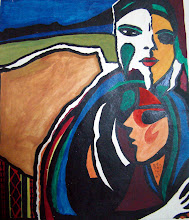Viewer Discretion
He thu ziakah hian pawngsual chungchang leh mipat hmeichhiatna rawngkai (narrative) a awm avangin chhiartute zingah hetiang hriat nuam ti lo leh ngaihtuahna buai hma deuh kan awm a nih chuan chhiar hmain fimkhur lawk tur leh chhiar kher lo turin zalenna pawh i nei tih i lo hre hmasa dawn nia.
Sex hi mihring nuna bet tel tlat a ni. A pawimawh a, a tel lovin hring nun a kalhkim thei lova, hman sual theih fe a ni bawk. Khawi khawtlangah mah hian duh duh a, tawngtawngpaw Sex hman ringawt theihna a awm ngai lo. Dan leh khawtlang atanga khuahkhirhna a awm vek mai. Mahse, hman lai atanga tunlai khawvel chawk buaitu lian ber pakhat a ni reng si a ni. Mizo fate pawh kan bang tak tak thei bik ta lo. Sex hian mihring rilruah engemaw zawng takin a thawk nasa a ni. Mithiam zingah pawh Sex leh politics inzawm theih riau dante, khawtlang nuna a thawh dan te an chhui nasa em em tawh. Ram leh hnam hrang hrang ten sex kan ngaihdan leh hmuh dan a inang vek lo va. Tisa chakna erawh kan neih dan a inang vek lawi si. Hetah tak hian khawtlang leh ram dinhmun a zira inzirtirna hi a pawimawh reng a ni.
Globalization in min suartluan a, khawvel hmun hrang hrang chanchin kan hmuin ka hre thei vek tawh lai hian inzirtirna mumal kan nei tha lo tih thawm kan tualchhuak chanchinbuah a ri zing ta hle. A nih phung tak kan hriat mai piah lamah Kristian Ethics atanga zirtirna hi kan neih a hun viau reng a ni. Kan thalai ten Cosmopolitan magazine leh magazine hrang hrang te an hum ve fur tawh a. Heng chanchinbuah hian Sex hman nawm dan tur an ziak kur ngei nguai a. Kan thalaite tan chuan tem ve chakawm tak tur hi a ni. Kan ei leh in a tha a, kan hrisel nasa tawh mai si a. Tisa chakna pawh hi a pung ngei ang le. Andra Pradesh-ah hnam hrang hrang sex hman nasat dan an zirnaah chuan hnam hnufual tribal/dalits zingah sex hman zat hi a tlem chuang bik hauh lo tih a ni. Mihringin tisa chakna kan neih hi sual hrim hrim a ni lo. Tisa chakna nei reng reng lo chu mi pangai nih lohna zawk a ni. Ram changkang zawkah chuan hetiang lama harsatna neite pawhin damdawi lama thiam nei an rawn zut zawk a ni. He chakna tihlawhtling tura Kristian ethics, social norms leh dan huang pel a tihhlawhlawhtlinna kan va zawnna tak hi a fuh lo lai chu a ni. Kristian ethics atang chuan Nupa nih hma a sex lo hman hi thil dik a ni lo tawp mai. Mahse, Kohhran zirtirna hian thalai tamtak nun erawh a nghawng thleng pha tawh lo va. Hei avang hian NGO tamtak chuan invenna kawng dang-alternative an lo zawn pui ta hial reng a ni.
Mizoramah hian mipat hmeichhiatna hmansualna hi a hluar reng a ni. Kan khawvel inthlak danglam a, technology a sang chho zeal, tun hma leh tun hnua Sex kan ngaihdan pawh a danglam telh telh a. Mizo siam ngei Video maksak pui pui a awm ta fur a. Kan thalaite zingah mi thenkhat chil va tihput duhna (attention seeking behaviour) rawngkai a awm mek a. Mizo Music video thenkhatah te engemaw tisa chakna ti danglam tumna rawngkai a lang chho mek a. Chung chu, changkang kan tih zawng tak a lo ni a. Hmanni lawkah chuan Super Model neihnaah chuan tleirawl pakhat chu underwear lang vah vah khawpin a rawn kal a. Mipui chuan Miss or Model an nihna angin an thlir tawh lova, tlangval leh patling ho chuan khawhar Inah nen hahip in an sep zui tawh mai a ni. Changkang kan ti miau si a lawm le! Heng ho chezia chu thlifim hauh lovin, naupang leh puitling sawi chuang lovin, kan phek thlir vek si a. An nun zia, chhungril hriatthiam pui phak hauh lo naupang chumchiap lekte chuan, kan celebrity-te intheh no dan te chu an lo entawn nghal mai bawk a. Nu leh pa te chuan, “ka fanu te reuh hi" tiin kan nuih liam mai mai a. Naupangte pawh hi ler kan zirtir tel tlat a ni. Heng thil hian kan tunlai khawtlang nun tawp hnawk zet hi a hring chhuak mek a ni.
Mizoramah hian Nu leh pa nei mumal lo, naupang enkawlna Kohhran leh pawlin kan ngah ta hle a. Heng naupang zinga tam takte fahraha an pianchhuahna chhan hi sex hmankhawlohna nen hian inzawmna a neih a rinawm hle.Mizoram in AIDS kan hmelhriat tam ta lutuk hian Sex kan hman dan chu a tilang tawk viau a ni. Kan NGO te hian thingtlang lamah bu han khuar thuk deuh se, thingtlang mi zingah hian AIDS vei engzat nge awm tawh ang le. NGO hnuaia AIDS enkawltu pakhat chuan “AIDS positive an enkawl mekte hi a then chu nula nalh leh hmeltha tak tak an ni a. Khawtlangin a endawng laklawh tawh bawk nen, an mahni a rilru puitling zawk an put theih hma a, tanpui an nih reng loh chuan- an nun hluia let leh hi an chak reng thin a. An nun hluiah let leh se, thingtlang pa hlawh la thin leh sorkar office dawr tura khawpui pan thinte hian an hre hrang dawn si lova, an hnar phal dawn bawk hek si lova, Rei lote chhungin AIDS positive hi an pung hluai mai dawn a ni a ti. Damdawi In thenkhatah chuan damlo inentir zingah thisen thianghlim lo zet zet an awm nawlh nawlh fo mai. Nakin lawkah chuan nupui/pasal nei turte pawhin thisen test hmasak phawt hi kan la rawt hial mai angem le?
A nih leh thalaite chuan sex chu engtin nge an ngaih chiah le? Madini chu a thian ten thangthar tawngkam takin “changkang lo” an ti thin a, a chhan chu mipa ala mutpui loh vang a ni. A mah pawh nasa takin a inkil tawih phah em em thin a ni. An awmna hostel-a a hmeichhiat puite chuan mipa an mutpui vek tawh a. Rawlthar mipa tam tak chuan hmeichhe mutpui tawh nihna chu uan pui nan tak an hmang mai thin bawk. Tleirawl zingah hetiang hi a hluar em em tih Lunglei tleirawl pakhat chuan tih tak meuhin min hrilh mauh mai.
Nau tih tlakte pawh hi ngaihmawh tham a awm ta. Civil Hospital, Lungleia Nurse pakhat chuan, “nitin hian nau ti tla pakhat tal hi an lo kal ziah thin” a ti. Nausen tuiril mai an la nih laia tihtlak ai chuan nau thankin tawh tih tlak a tam hle tih a sawi bawk. Private Medical Clinic ho sum luhna ber pakhat chu nau tih tlak ni a sawi a ni. Aizawla Private clinic-te ringawt hian kumkhata nau ti tlak zat record hi engzat tak ni ang le? Pu PC Biaksiama te chauh ni lovin, kan hmeichhe pawl MHIP leh Kohhran hmeichhiate hian tih tak zet a vei a va hun ta em. Tleirawl pakhat chuan “nau tih tlak ngai khawp khawp hi an mawl a ni mai, In ven theih em mai” tiin a sawi a. Damdawi a tam em mai” tiin min hrilh a. Tleirawl pakhat chuan a thiannu in a bialpa nen Sex an hman dan hi a hrilh thin thu a sawi a. Rawlthar(Mipa) thenkhat ka kawmte chuan “Blue Film” (thalai an tawngkam chuan- Mi rethei film) an en uar hle thu an sawi a. Pakhat ka zawh chuan, Mizo thalai tam zawk (a bikin khawpui) chuan Blue film an en vek thu a sawi a. Computer neite chu an thian te nen an inhawh tawn thin thu leh Video Library atanga an hawh thin thu an sawi a. Mizoram Video Library-ah chuan a hawh man a to zawk avang leh a hlawk zawk avangin a awm fur hlawm a ni tih a sawi bawk. Tin, thingtlang lamah pawh Pirated CD hi tlawm te te in Burma leh Bangladesh atangin hmuh zung zung tur a awm niin a sawi.
Tleirawl (Hmeichhia) thenkhat Sex film an en thin em ti a ka zawh ve thungte chuan an sawi tha duh lo tlangpui a. Thenkhat chuan, an unaute computer-a awmsa tihpalh thilthua an hawn chhuah palh a, an en ve zuai thin thu an sawi a. An en ve tawh hrim hrim em tih zawhna chu, “a tenawm em mai” tih hlak pahin a tam zawk chuan an en tawh tih an sawi zeuh va. Ka la en chiah lo ti te pawhin, en ve chhin hrim hrim an pawi an tih loh thu an sawi bawk. Mipa ka nih avang information hi min hrilh tha duh meuh lo a ni. Hmeichhia ngeiin interview mumal tak conduct thei se, hriatchhuah belh tur a awm nual ngei ang. Engpawhnise, hemi atanga rin lawk theih chu, hmeichhia tam tak pawh hian an en ve thin ngei tih chu a chiang viau. (Notes: Sex Film en hrim hrim hian a tha emaw tha lo emaw a nghawng chhuah tur lam hi chu helama thiamna neite chhuiah dah ila, a bikin thalaite sukthlek hrim hrim hriat theihna atan ka han tarlang tel mai a ni.)
Sex kaihnawih harsatna hrang hrang chuan nasa zawkin min ko mek a. Thenkhat chuan “Thianite Len” siam mai an rawt bawk. Hetih lai hian kan NGO thenkhat chuan concert ilo nikhuaah te chuan “kawhte bel” (condom) an lo sem mawlh mawlh bawk. NGO thenkhat, Thianite enkawl tute chuan an zan len dawna “kawhte bel” an lo paipawn mawlh mawlh bawk. Mizoram mai a ni lo, Mizoram pawn thlengin “thianite" hi kan kat nuk tawh mek a ni.
Kum 2004-2005 chhung khan rape case-64 a awm a, 2005-2006 khan-39, molestation-2004-2005 khan case-87, 2005-2006 chhung khan case-53 lai a awm hman bawk a ni. IPC hnuaia case register dangah hian pawngsual nia ngaih chiah loh, mahse hemi kaihnawih hi engzat chiah nge awm ang le? Tunhma kha Danin pawngsual a hrilfiahna hi a famkim lo em em a, pawngsual rawngkai case tamtak kha investigation neih hnuah meuh chuan case danga register sak an ni fo thin. Tun lai chuan pawngsual awmzia hi hrilhfiah thar zel a a ni a, a huam theih pawh a zau em em tawh a ni.
Mizo zingah pawngsual kan tih hian mipa in hmeichhia an sualna hi a kawk tam ber a. Pawngsual tih hian Mipa leh hmeichhia chauh a ni lo va, hmeichhe puitling in mipa naupang an pawngsual thei a, mipa leh mipa chungah pawngsual hi thleng thei a ni. Tin, hmeichhia leh hmeichhia inkarah pawh pawng sual thleng thei a ni. Heng hi Mizoramah survey mumal tak awm thei ta se, a thleng kim viau tawh lo’ng maw? Kan thiannu pakhat nen Lunglei Police hotu pakhat ka zawh chuan, “Pawngsual tak tak hi a thleng ngai lo, engemaw vang a ni zawk” tiin a sawi a. "Hmeichhe awm mawh vang a ni tlangpui e" a ti bawk. Hmeichhia in mipa hnenah an beisei ang an hmuh loh hnuah pawngsual an ti tha leh vek mai mai a ni” tiin a sawi. Eng chen nge he ngaihdan hi pawm tur tih erawh ngaihtuah tham a ni. Aizawla Police hotu pakhat ve thung chuan, “Mizo zingah puitling zingah Pawngsual tak tak a thleng ngai meuh lo, naupang pawngsual erawh police pawhin kan ngai serious viau a ni” a ti. Kan Police leh a field a che thin kan NGO te hmuhchhuah hi a inan loh hmel viau a ni.
Mizorama rape thleng reng reng hi report vek a ni chiah ang em? Mi hmusit leh endawng hlauh avangin report mumal loh hi engzat nge awm ang? Zirbing mi leh NGO te tan pawh khawrhchhuah kim vek sen a ni hauh lovang. Mi thenkhat chu an pa te emaw an uanau pa emaw ten an pawngsual nawn awn awn hnu kum tam hnuah an sawi ngam chauh a. Thenkhatte erawh mahni in an sepui ruah do tlawk tlawk kumkhua thung bawn dawn a ni.
Kan chanchinbu mite pawh hi an fimkhur a hun a ve tawh. Pawngsual tuartute hmingte hi chanchinbu-ah tarlan chuai chuai hi a fuh ber lo. An nun kal zel a, mi endawng hlawh theih an nih avangin an identity hi ven him sak tlat tur a ni. Tarlan kan duh rau rau anih chuan an hming hi thlak danglam sak tal tur a ni. Hman deuh khan Skylink local cable network chuan “viewer discretion” pawh siam hmasa hauh lo vin, Africa rama tribal/ethnic group thenkhat ho sex hman dan a ngial a nganin an rawn ti chhuak hmiah mai nia. Kan local cable network ho hian media kalphung hi an chik tawk lo deuh niin a lang. Sorkar hian hetiang hi chu khap hial se tih a duhawm hle.
September 2006 khan Lengpui-ah chuan mi pakhat chuan, mi pangngai pha lo deuh hmeichhe pakhat hi vawi-4 dawn a lo pawngsual tawh a. An khua te hian report nghal mai lovin, he pa hi warning an lo pe hmasa te te a. Mahse, a khawih zui zel avangin police hnenah pek a ni chauh a ni. He nu hi mi pangai pha lo deuh a nih avang hian an ngaipawimawh tawk lo em ni le? Mihring a nih ve avang tal pawh hian zahawmna a nei love'm ni? Engvangin nge vawikhatnaah hian police an hrilh mai loh?
Kristiannate pawh hi hman sual theih tak a ni. Hman deuh khan chhim lam khaw pakhat (…)ah chuan Nl thangi zan inkhawm bang chu-an thenawm lawk tlangvang pakhat chuan a lo sual a, chemte in a vau bet a ni. Thangi Pa hi ringtu tha tak leh Kohhran mi a ni a, Pawngsualtu leh a chhungte hian bawk khupin ngaihdam an dil nghal a. Thangi Pa hian ‘ringtu kan ni alawm’ tiin alo ngaihdam fel der mai nia. Kristianna atangin kan in ngaidam a ni thei e, Dan erawhin a ngaidam ngai lo tih hi kan hre tur a ni. Report ngei ngei tur a ni. Hepa hian a sim loh zia chu, a hnu lawkah case dang a nei leh nghal a ni.
V.Vanlalruati; Kum Tlinglo Khawihchhiat leh Pawngsual Lakah I Fa A Him Em?’ tih lehkhabuah chuan kumtling lo naupang khawih chingpenna lak fimkhur tul zia a lang chiang hle. Khaw pakhat (?) chuan naupang pakhat chu an awmpui rawltharin alo khawih thin a. Naupang anih avangin alo sawi thiam mai si lova, a tawpkhawkah hmeichhe naupang chuan thil nat thu a sawi ziah tak avangin an han zawt chiang a. An han hriatchhuah meuh chuan vawi engemaw zah alo khawih hman tawh a. He tleirawl hi hmeichhe naupang Pu nupui bik fa a nih avangin report a ni lo va. An insawi rem kual ta mai mai a ni. Hetiang hian sual kan vulh lian a, kan chul mam mai mai fo thin. A pawi tak zet a ni.
Hman deuh khan khaw pakhatah chuan chhungkaw rethei taka hmeichhe naupang chu pawngsual a ni. MHIP ten hma an lak pui dawn lai takin hmeichhe chhungkua leh pawngsualtu chhungkua chu Rs 5000 velin an lo inngaidam fel der mai nia. MHIP hruaitu zinga pakhat chuan ti hian min hrilh a, “ka va kal chilh a, an pawisa dawn chuan hmeichhe naupang chuan a nu hnenah 'wai wai min lei sak rawh aw' tiin a lo ngen a, lung a ti chhe tak zet a ni” a ti. He hmeichhe naupang hian a zahawmna khawih chingpen sak a ni tih reng a hre lo. Hetiang thil hi kan Mizorama thil thleng dik tak a ni ang tih rinngam hi a har asin! Hetiang case hi Mizoramah hian engzat nge thleng tawh ang le?
Lalruatfela Nu: Nawhchizawrhna leh a Kaihnawih, Lengchhawn Press, Aizawl 2004-ah khan chuan naupang pakhat chu a pahrawnin a nu awm lai ngeiin a pawngsual a. A nu chuan, "mate tap suh, a na rei lovang" a lo ti nia. Kan khawvel tawphnawk zia leh chona kan la lak nep si zia hi a lang chiang viau a ni.
A nih leh kan K.S te hi? K.S enkawltu NGO hnathawktu pakhat chuan ti hian min hrilh: “KS chi hrang hrang zingah KS tam tak chu an tet laia lo khawih bawrhban tawh an ni. An mahni rilruah khawtlangin endawng leh kawmserh niin an inhria a, kawng dang awmin an hre tawh lo va. Tuna an nun hi an thlang ta mai a ni”. Mi hausa nu, Sunday zinga rangkachak thi awrh chunga Biak In a tawngtai thinte hian Biak In chhung atangin hi chuan an khawngaih thin a lawm. Mahse, heng KSte hian an chenna in bathlar lek pawh rawn rap ngat sela chuan Tommoto uih in an lo vawm nghal duh ngat ang!
Kohhrante pawh hian nasa zawka hma a a lak a tul a ni. Kohhran thalai zingah Kohhran dan puitlinga inneih kan sawi mawi a. Mahse, kan hlawhchham lam deuh chu a ni. Chhimlama Pastor pakhat chuan, "kan bial chhungah kum tam ka awm chhungin Dan puitling a innei 2 chiah an awm a. A beidawn thlak a ni a ti. Chaw ngheia kan tawngtai avangte leh kristian ram kan intih avang ringawt hian hetiang thil hi a thleng lo dawn chuang lo. Hma lakna kan neih hi a hun ve tawh a ni. Kan sawi belh leh lawk teh ang. Kohhran mi deuh pakhat hnenah hma lak tul zia ka sawi a. A ni chuan Kohhran pawhin, "mahni tawkah hma chu ka la chho ve mek zel a" zuak ti duh lek a.
A nih leh Sex education chu enge ni ber ang le? Thil pakhat mai pawh a ni hauh lovang, naupang, thalai leh nupa nuna kalphung chu a inang hauh lovang. Naupang leh thalaite chu tawhsual an tawh loh nan te, nupa-a insiam hma a sex an lo hman mai loh nan te, sex in a nghawng chhuah tha lo tak lakah zirtir an tul a ni. Hetih lai hian Mizorama nupa tang then tam takte pawh hi a bul tak chhui ila, Sex lama harsatna a ni awm tak a ni. Heti anih chuan, nupate chu sex hman dan hrang hrang zirtir an ngai ta hial zawk a ni. Thenkhatin a nih lohna tura an hman nasat em em laiin, thenkhat dang te chu hman that hleih theih loh avanga buaite hi kan awm ngei tawh ang. CHuvangin, Sex education theuh theuh pawh thliarhran fel deuh hi a ngai ta a ni.
Sex Education kan mamawh kan tih rual hian mipui tam zawk chuan kan hip thiam tak tak meuh rih lo. Thenkhat chuan an han sawi a, ngaih loh lamah an lo ngai nghal mai bawk a. Hman ni deuh khan chanchinbu pakhatah chuan mipakhat hian Sex Education chungchang a rawn ziak a. Pawngsual tih rem nan, pawngsualtu mipa til lak sak a rawn rawt teh ngawt nia. Sex Education pawh ni lovin, hremna chungchang ni awm zawk tak a ni. A duh rorum lam mah mahin ka hria.
Hman kum khan chhim lama Thalai Kristian Pawl pakhat chuan Sex inzirtirna hun an buatsaih a. Mithiam bik an ruai a, thusawi lai chuan a ngaithlatu thalai rual chu an nui hluah hluah mai nia!. A engber kha nge an hip tak ang le aw? Hemi hnu hian Kohhran Hmeichhe Pawl in Sex inzirtirna bawk chu an huaihawt ve thung a. He mithiam bawk hi an ruai ve leh ta thung a. Nu tamtak chuan, an ngaithla zak ti tih tlat mai nia. Inkhawm banah chuan, nu thenkhat chuan thusawitu hnenah chuan, “patling tawh lehnghal i lo va mak roh ve a” zu ti zek pek a. Sex education sawi turin in sawm te te a, an mak roh zawk ngawt mai” tiin a sawi chhuak hial nghe nghe a ni.
Kan chanchinbu zawng zawng a, tapchhak theory hmanga sex chungchang thai tial chiam chiam hian awmzia a nei ber ang em? Heng ai chuan, Mizo zinga mipat hmeichhiatna lam thiamna nei bik- sexology, psychology, psychiatry etc lama thiamna nei ten chona la ngam ta zawk se kan zia zawk ang em le. An ni hi awmze nei a thangthar zirtirtu tangkai tak an nih ngei a rinawm. sex education kan tih rual rual hian…duh duhin mahni ngaihdana an rawn puak chhuah pui phawng phawng hian awareness tak aia sex hmang uar zawng a thangthar hrilh veng tawk lek hi a ni mai palh ang tih a hlauhawm viau zawk a ni. Zirtirna kim chang ni lo, entirnan naupai theih hun leh indan ringawtte sawi uar ta viau ila, thalai tam tak chuan "Indan dan ka hre tawh bawk a, sex chu duh tawkin hmang tawh mai ang aw" ti zawngin alo la palh daih thei a ni. Thangthar rilruah hian kawng engkim - a chhia-a-thaah an adventurous tial tial a, khap chin/huang (restrictions and prescriptions) chin dai chakna rilru a lian hle tawh tih hi i theihnghilh lovang u. Chuvangin, engkim mai hi systematic zawk leh tunlai khawvel inher chho zel mil tur a chona hi kan lak ngam a hun tawh a ni tih hi ka thutlukna ni teh se.
Notes:Mimal hming ka han tarlan te khi mimal identity thup sak nan phuahchawp vek a ni. He chanchin ka ziah a thilthlengte hi a tam zawk hi ka hmelhriat ngei te chunga thleng a ni. Tin, hemi bakah hetiang chanchin zirtu kan NGOte hnen atanga ka dawn a ni. Tin, mi thenkhat ka kawm kual atanga ka lakkhawm mai a nih avangin Mizoram ziarang zawng zawng erawh a ni kher lem lo vang. Mi thenkhat ngaihdan ka lakkhawm mai a ni tih hriat a tha ang. He article ka ziakna tura information min petu NGO a thawk mekte leh ka thiante, tleirawl leh rawlthar ka kawm zawng zawngte chungah lawmthu ka sawi mawlh mawlh e. Thanks vawi sarih…!!!.

 Zanlai
Zanlai Gender inequality
Gender inequality



























